Elephant ear plant types captivate plant lovers with their bold, oversized leaves and tropical flair, making them a stunning addition to homes and gardens. Known for their dramatic foliage, these plants belong to several genera, including Colocasia, Alocasia, Xanthosoma, and Caladium, each offering unique varieties to suit different spaces and aesthetics. Whether you’re a beginner looking to grow a striking houseplant or a gardener aiming to elevate your outdoor landscape, understanding elephant ear plant types helps you choose the perfect variety. This guide explores the most popular types, highlighting their appearance, ideal growing conditions, and best uses, with insights for both novices and seasoned growers.
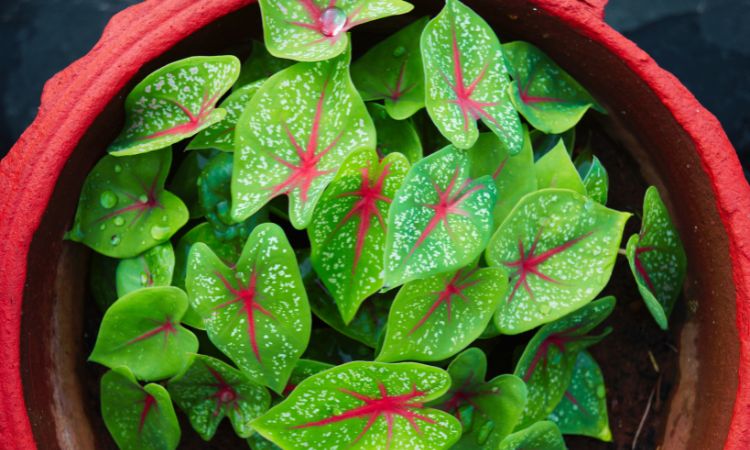
What Are Elephant Ear Plants?
Elephant ear plants are tropical perennials named for their large, heart-shaped or arrowhead-shaped leaves that resemble an elephant’s ear. Native to regions like Southeast Asia, South America, and the Pacific Islands, they thrive in warm, humid climates but can adapt to various settings with proper care. The main genera, Colocasia, Alocasia, Xanthosoma, and Caladiu, differ in leaf texture, size, color, and growth habits. Some are ideal for indoor pots, while others shine in garden beds or water features. Knowing these differences ensures you pick the right type for your space.
Major Elephant Ear Plant Types
Below, we dive into the primary genera and their standout varieties, detailing their appearance, growing conditions, and ideal uses.
Colocasia
Colocasia, often called taro, is one of the most iconic elephant ear plant types, prized for its massive, lush leaves and versatility. These plants are grown for both ornamental and edible purposes (their roots are used in dishes like poi). Colocasias typically have matte or slightly glossy leaves and thrive in wet, swampy conditions, making them perfect for water gardens or moist landscapes.
Appearance
- Leaf Shape and Color: Heart-shaped or arrowhead-shaped leaves, often green, but some varieties feature black, purple, or variegated patterns.
- Size: Leaves can grow 1–3 feet long, with plants reaching 3–6 feet tall, depending on the variety.
- Popular Varieties:
- Colocasia esculenta ‘Black Magic’: Deep purple-black leaves with a velvety texture, ideal for dramatic displays.
- Colocasia ‘Mojito’: Green leaves with purple speckles and veins, adding a playful vibe.
- Colocasia ‘Illustris’: Dark green leaves with vivid green veins, striking in shaded gardens.
Ideal Growing Conditions
- Light: Bright, indirect light indoors, partial shade outdoors to prevent leaf scorching.
- Soil: Rich, moist, well-draining soil, tolerates wet conditions, even standing water.
- Temperature: Prefers 65–85°F (18–29°C), protect from frost.
- Humidity: High humidity (60%+), mist leaves indoors or use a humidifier.
Use
- Indoor: Smaller varieties like ‘Mojito’ work well in large pots in bright rooms.
- Outdoor: Perfect for water gardens, pond edges, or shaded tropical landscapes.
Pro Tip
For outdoor Colocasias in cooler climates, dig up tubers before the first frost and store them in a cool, dry place to replant in spring.
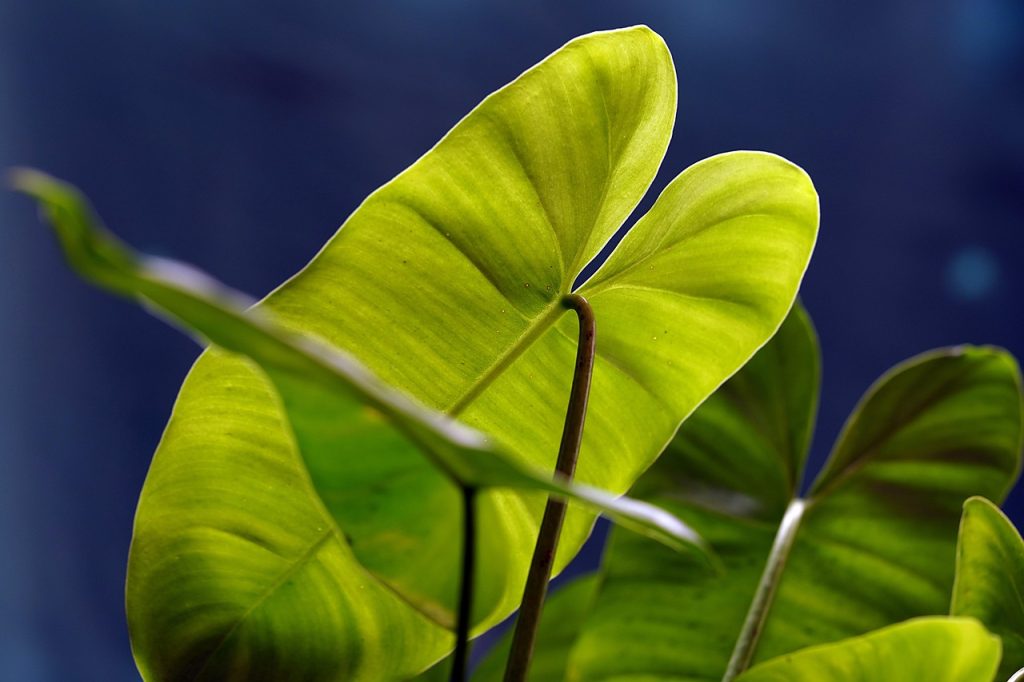
Alocasia
Alocasia, often called upright elephant ears, is prized for their glossy, sculpted leaves and architectural appeal. These elephant ear plant types are popular as houseplants due to their compact size and striking foliage, though some varieties suit outdoor gardens in warm climates. Alocasias are more sensitive to overwatering than Colocasias, requiring careful attention to soil moisture.
Appearance
- Leaf Shape and Color: Arrowhead or shield-shaped leaves, often glossy, in shades of green, silver, black, or variegated patterns with prominent veins.
- Size: Ranges from 1–6 feet tall, leaves typically 1–2 feet long.
- Popular Varieties:
- Alocasia ‘Polly’: Compact with dark green, arrow-shaped leaves and silvery veins, perfect for indoor spaces.
- Alocasia ‘Black Velvet’: Small, velvety dark green leaves with white veins, ideal for tabletops.
- Alocasia ‘Dragon Scale’: Textured, iridescent green leaves resembling dragon skin, a collector’s favorite.
Ideal Growing Conditions
- Light: Bright, indirect light, direct sun can burn leaves, while low light dulls color.
- Soil: Well-draining, airy mix with peat, perlite, and potting soil.
- Temperature: 60–80°F (15–27°C), avoid cold drafts or sudden temperature drops.
- Humidity: Loves 70%+ humidity, use pebble trays or humidifiers indoors.
Use
- Indoor: Ideal for pots in bright bathrooms or living rooms with high humidity.
- Outdoor: Suits shaded patios or tropical gardens in frost-free zones.
Pro Tip
Rotate Alocasia pots every few weeks to ensure even light exposure, preventing lopsided growth and maintaining symmetry.
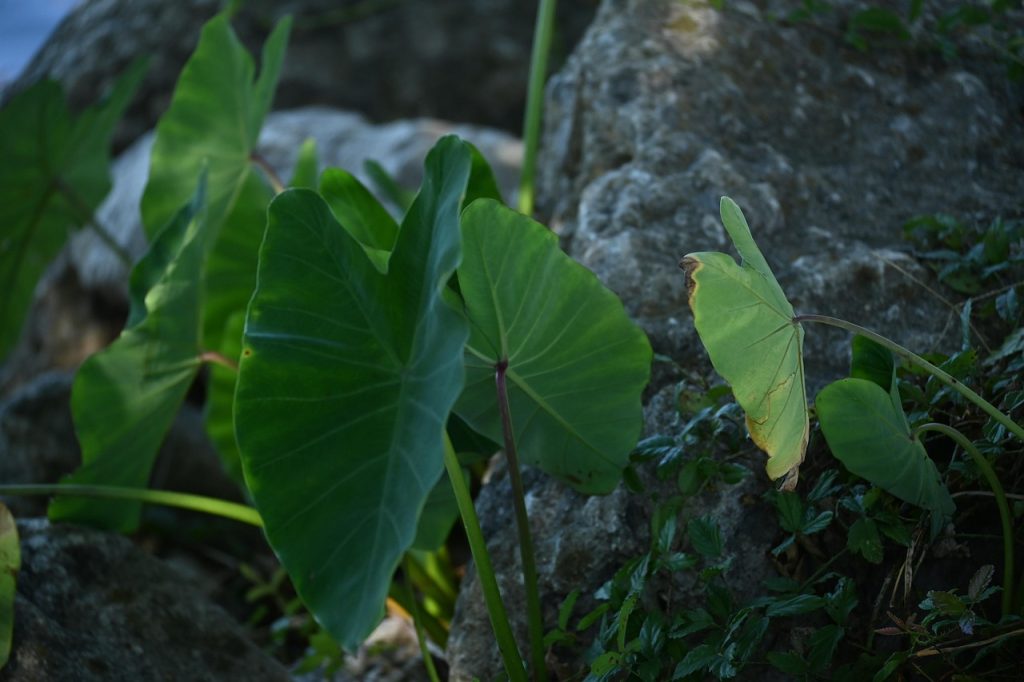
Xanthosoma
Xanthosoma, sometimes called arrowleaf elephant ears, is are less common but equally stunning elephant ear plant types. Native to Central and South America, they’re grown for their bold foliage and adaptability to both indoor and outdoor settings. Xanthosomas are often mistaken for Colocasias but have thicker, more leathery leaves and a preference for slightly drier conditions.
Appearance
- Leaf Shape and Color: Large, arrow-shaped leaves, typically green or variegated with creamy white or yellow patterns.
- Size: Plants grow 2–5 feet tall, with leaves up to 2 feet long.
- Popular Varieties:
- Xanthosoma ‘Lime Zinger’: Bright chartreuse leaves that glow in shaded gardens.
- Xanthosoma sagittifolium: Classic green, arrow-shaped leaves, robust for outdoor beds.
- Xanthosoma ‘Albo-marginata’: Green leaves with creamy white edges, adding elegance.
Ideal Growing Conditions
- Light: Partial shade outdoors, bright, filtered light indoors.
- Soil: Well-draining, fertile soil with organic matter, avoid waterlogged conditions.
- Temperature: 65–80°F (18–27°C), protect from frost.
- Humidity: Prefers 50–70% humidity, tolerates lower humidity than Alocasia.
Use
- Indoor: Larger varieties need spacious rooms, but smaller ones work in pots.
- Outdoor: Great for tropical garden beds or as a focal point in shaded areas.
Pro Tip
Xanthosomas benefit from occasional leaf cleaning with a damp cloth to remove dust, enhancing photosynthesis and keeping foliage vibrant.
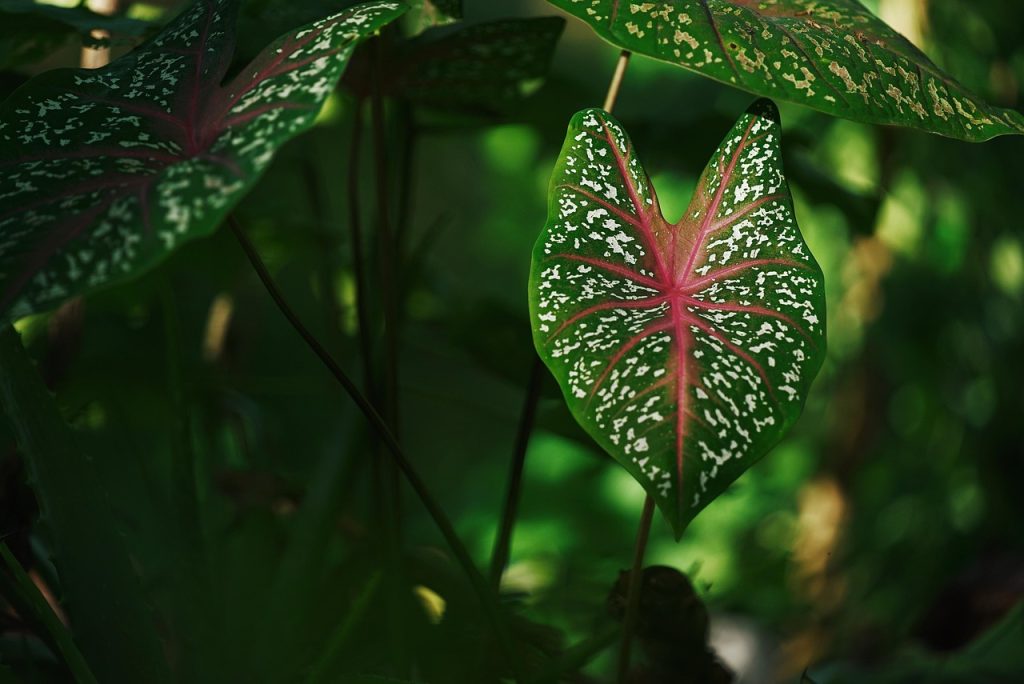
Caladium
Caladiums are vibrant elephant ear plant types known for their colorful, paper-thin leaves, often grown as annuals or indoor plants. Unlike other elephant ears, Caladiums are primarily ornamental, with no edible parts, and their vivid hues make them a favorite for adding pops of color. They’re ideal for beginners due to their manageable size and striking appearance.
Appearance
- Leaf Shape and Color: Heart-shaped, translucent leaves in pink, red, white, green, or multicolored patterns.
- Size: Compact, 1–2 feet tall, with leaves 6–12 inches long.
- Popular Varieties:
- Caladium ‘Fancy-Leaf’: Large, heart-shaped leaves in pink, white, or red with green veins.
- Caladium ‘White Queen’: White leaves with green and red veins, elegant and bright.
- Caladium ‘Strawberry Star’: White leaves speckled with pink, perfect for indoor pots.
Ideal Growing Conditions
- Light: Bright, indirect light indoors, dappled shade outdoors to avoid leaf burn.
- Soil: Loose, well-draining mix with peat and perlite.
- Temperature: 70–85°F (21–29°C), sensitive to cold below 60°F (15°C).
- Humidity: High humidity (60%+), mist regularly or use a humidifier.
Use
- Indoor: Perfect for bright windowsills or under grow lights.
- Outdoor: Ideal for shaded garden beds or containers in warm climates.
Pro Tip
In cooler climates, lift Caladium tubers in fall and store them in a warm, dry place to prevent rot, then replant in spring for vibrant growth.
Read More: What Type of Plant Is a Mushroom
Comparison of Elephant Ear Plant Types
To help you choose, here’s a table summarizing the key differences:
| Type | Leaf Appearance | Size | Ideal Conditions | Best Use |
|---|---|---|---|---|
| Colocasia | Large, matte, green/purple | 3–6 ft tall | Moist soil, partial shade, high humidity | Water gardens, outdoor |
| Alocasia | Glossy, arrow-shaped, green/silver | 1–6 ft tall | Well-draining soil, bright indirect light | Indoor, shaded patios |
| Xanthosoma | Leathery, green/variegated | 2–5 ft tall | Fertile soil, partial shade | Gardens, large pots |
| Caladium | Thin, colorful, pink/white/red | 1–2 ft tall | Dappled shade, high humidity | Indoor, shaded beds |
Choosing the Right Elephant Ear Plant for Your Space
Selecting the best elephant ear plant type depends on your environment and aesthetic goals. For indoor spaces with limited room, compact Alocasias like ‘Polly’ or Caladiums like ‘White Queen’ are ideal, offering vibrant foliage without overwhelming small areas. For outdoor gardens, Colocasias like ‘Black Magic’ or Xanthosomas like ‘Lime Zinger’ create bold focal points, especially in shaded or wet areas. Consider your climate, frost-free zones support year-round outdoor growth, while cooler regions may require indoor overwintering or tuber storage. Beginners should start with forgiving varieties like Colocasia ‘Mojito’ or Caladium ‘Strawberry Star’ for easy success.
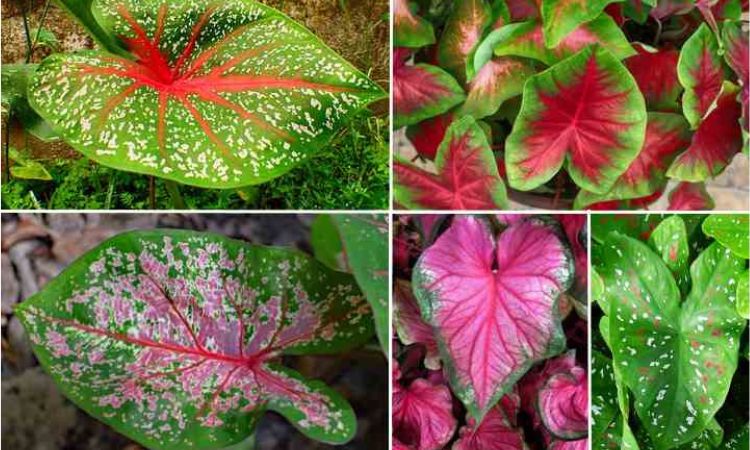
FAQs About Elephant Ear Plant Types
Based on Google search trends and People Also Ask results, here are answers to common questions:
ear plants? The main types are Colocasia, Alocasia, Xanthosoma, and Caladium, each with unique leaf shapes, colors, and sizes suited for indoor or outdoor use.
Alocasias like ‘Polly’ or ‘Black Velvet’ and Caladiums like ‘White Queen’ are compact and thrive in indoor conditions with bright, indirect light and high humidity.
Yes, but only in frost-free climates (USDA zones 9–11). Colocasias and Xanthosomas excel in gardens, while Alocasias and Caladiums need protection from cold.
Colocasias have matte, often larger leaves and tolerate wet soil, while Alocasias have glossy, arrow-shaped leaves and prefer well-draining soil.
Yes, Caladiums are considered elephant ears due to their large, heart-shaped leaves, but they’re more delicate and colorful than Colocasia or Alocasia.
Colocasias, like ‘Black Magic,’ typically have the largest leaves, growing up to 3 feet long, ideal for dramatic outdoor displays.
In zones below 9, they can’t survive outdoor winters. Dig up tubers or bring potted plants indoors to a warm, bright spot during cold months.
Conclusion
Elephant ear plant types offer a dazzling array of options for plant enthusiasts, from the bold Colocasia ‘Black Magic’ to the delicate Caladium ‘Strawberry Star.’ Each type, Colocasia, Alocasia, Xanthosoma, and Caladium, brings unique beauty, size, and growing needs to suit your home or garden. By understanding their distinct appearances and ideal conditions, you can choose the perfect variety to elevate your space. Whether you’re a beginner or a seasoned grower, these tropical giants are sure to impress with their lush foliage. Pick your favorite type and start growing a stunning elephant ear plant today!